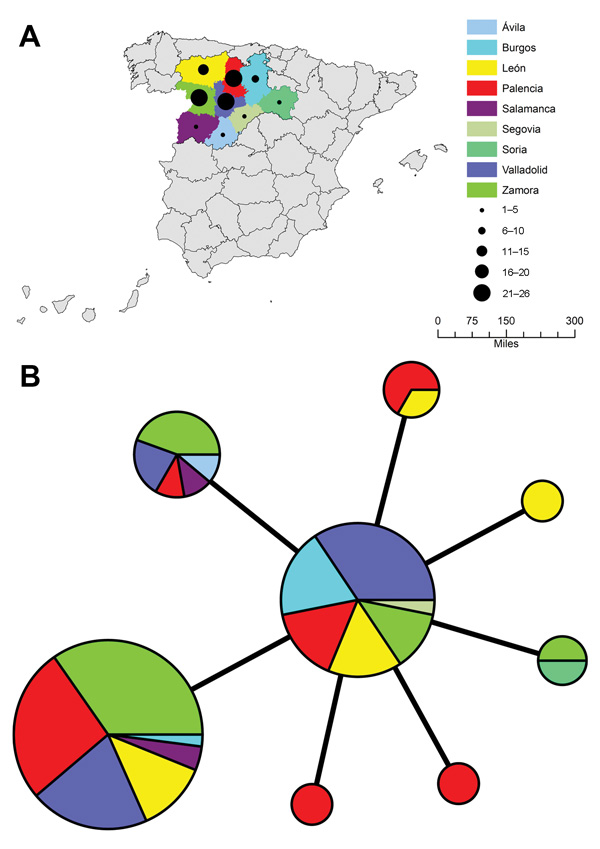Volume 20, Number 5—May 2014
Research
Molecular Investigation of Tularemia Outbreaks, Spain, 1997–2008
Figure 3

Figure 3. A) Geographic distribution of 98 Francisella tularensis subspholarctica isolates from SpainColor codes represent geographic origin, and black circles represent number of isolates recovered per provinceB) Minimum-spanning tree based on multilocus variable number tandem repeat (MLVA) analysis of genotypes, showing genetic relationships among 98 Ftularensis subspholarctica isolates from SpainEach circle represents a unique MLVA type and size of each node is proportional to the number of isolates of that typeThe MLVA types are colored according to the geographic origins of the isolates with the same color code as in panel A.
Page created: April 16, 2014
Page updated: April 16, 2014
Page reviewed: April 16, 2014
The conclusions, findings, and opinions expressed by authors contributing to this journal do not necessarily reflect the official position of the U.S. Department of Health and Human Services, the Public Health Service, the Centers for Disease Control and Prevention, or the authors' affiliated institutions. Use of trade names is for identification only and does not imply endorsement by any of the groups named above.